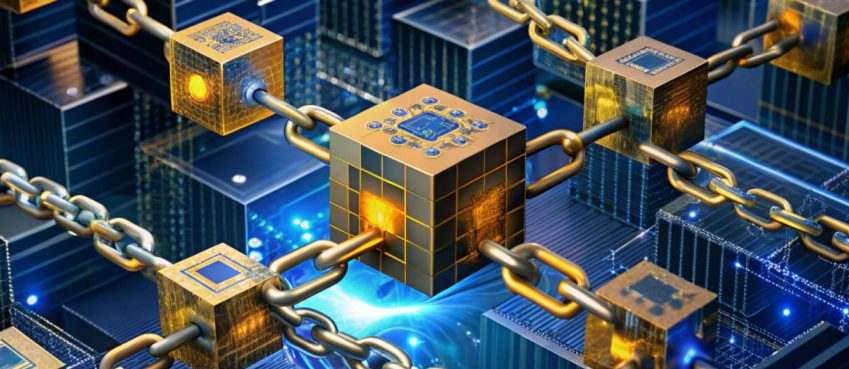
Cybersecurity has gradually become one of the primary concerns of businesses and other organizations. According to a survey conducted by Gartner, it’s now seen as a business risk, and not just a mere technology risk, by 88% of security boards.
This sentiment has been reinforced by the shift towards remote work (accelerated by the COVID-19 pandemic) and by a constant increase in the frequency of cyber-attacks over the course of the past few years. Research conducted by Check Point reveals that in the third quarter of 2022, global cyber attacks increased by 28% compared to the same period in the previous year. Some most common cyber attacks include malware, phishing, DNS tunneling, and DDoS attacks.
This article will explore the top 2023 cybersecurity trends and how companies and other organizations can protect themselves more effectively from cyber threats.
1. IoT, Cloud Technologies, and Security in Remote or Hybrid Workplaces
As mentioned earlier, the COVID-19 pandemic quickened the shift toward remote and hybrid work. Remote work refers to a scenario where a company’s employees work entirely from a private location (usually their home) rather than the organization’s offices. Recent stats show that 26% of US employees currently work remotely, and 16% of companies in the US are fully remote. In contrast, a hybrid workplace refers to a situation in which employees split their time between working remotely and working conventionally at the office.
Many security measures designed for an office environment cannot be replicated when the entire workforce (or part of it) is working remotely. Particular attention should be given to IoT devices, which are increasingly essential tools for remote workers and their companies. According to recent stats, there were 10 billion connected IoT devices in 2021, and this number is forecast to reach 41 billion by 2027.
While IoT devices undoubtedly provide numerous benefits (such as more effective ways for employers to track the productivity of their workers), they collect sensitive data that cybercriminals may target. This is pushing companies to adopt IoT cloud-based device management solutions to increase their control over these tools. These platforms allow organizations to operate the IoT environment more efficiently by performing functions such as configuration, remote provisioning, control, and authentication of IoT devices.
Also read: What Is DeepNude Undress AI Tool? A Complete Guide + Best Alternatives To AI Undress Apps2. Training Employees to Prevent Cyberattacks
Although most employees use digital tools and exchange sensitive information, many of them are not properly aware of cyber threats and didn’t receive the right training to detect and prevent them. There are numerous ways in which cybercriminals could take advantage of employees’ lack of experience in this arena. These include phishing, malware, ransomware, botnet attacks, and social engineering tactics. Companies should put in place a set of strategies to minimize employee errors that could result in exposure to cyber risks.
First of all, companies should use language that is not overly technical and makes cybersecurity topics understandable and relatable to employees. Employees should also be encouraged to take extreme care of their devices, as well as use only devices provided by the organization (when possible). After all, more breaches than people think are caused by the loss or theft of devices. Workers should also use separate accounts on their devices for their personal and work activities. Work accounts should have restricted us and be subject to monitoring. Obviously, employees should also be trained to spot suspicious activities, including pop-ups, emails, and apps that appear on their screens and for which the source or purpose can’t be clearly identified. Other steps that can boost security include teaching employees how to choose strong passwords, store passwords safely, use VPNs effectively, and sweep home networks.
Online cybersecurity courses are also a great way to give your employees a stronger foundation and better equip them to deal with cyber threats.
3. Reinforcing Zero Trust By Integrating Cyber and Physical Security
A Zero Trust approach is based on the idea that nothing should be trusted by default and that all users and devices must prove their trustworthiness. This approach takes into account threats that can affect the organization through both cyber and physical channels. It’s based on the assumption that security risks come from both inside and outside the network. Access to the network’s resources (data, systems, resources) should be denied by default, and authenticated users or devices should be given siloed access just to those resources they need to complete their job.
For example, an employee that has been granted access to a building may be subject to additional security checks to enter areas where specific resources are located. This can be achieved through commercial access control systems which include a control panel, door readers, and credentials that are scrutinized every time somebody attempts to access a new area.
4. Using AI and Machine Learning to Prevent Data Breaches
Data breaches can be extremely costly for organizations. Artificial intelligence and machine learning are powerful tools that can help decrease their occurrence. They can process the data gathered from the organization’s systems to find anomalies and trigger a certain action, such as blocking a certain user or alerting a human supervisor. While these technologies can’t replace human cybersecurity specialists, they can handle first-level security and allow human analysts to prioritize their work more effectively.
Top 10 News
-
01
Top 10 Deep Learning Multimodal Models & Their Uses
Tuesday August 12, 2025
-
02
10 Google AI Mode Facts That Every SEOs Should Know (And Wha...
Friday July 4, 2025
-
03
Top 10 visionOS 26 Features & Announcement (With Video)
Thursday June 12, 2025
-
04
Top 10 Veo 3 AI Video Generators in 2025 (Compared & Te...
Tuesday June 10, 2025
-
05
Top 10 AI GPUs That Can Increase Work Productivity By 30% (W...
Wednesday May 28, 2025
-
06
[10 BEST] AI Influencer Generator Apps Trending Right Now
Monday March 17, 2025
-
07
The 10 Best Companies Providing Electric Fencing For Busines...
Tuesday March 11, 2025
-
08
Top 10 Social Security Fairness Act Benefits In 2025
Wednesday March 5, 2025
-
09
Top 10 AI Infrastructure Companies In The World
Tuesday February 11, 2025
-
10
What Are Top 10 Blood Thinners To Minimize Heart Disease?
Wednesday January 22, 2025







